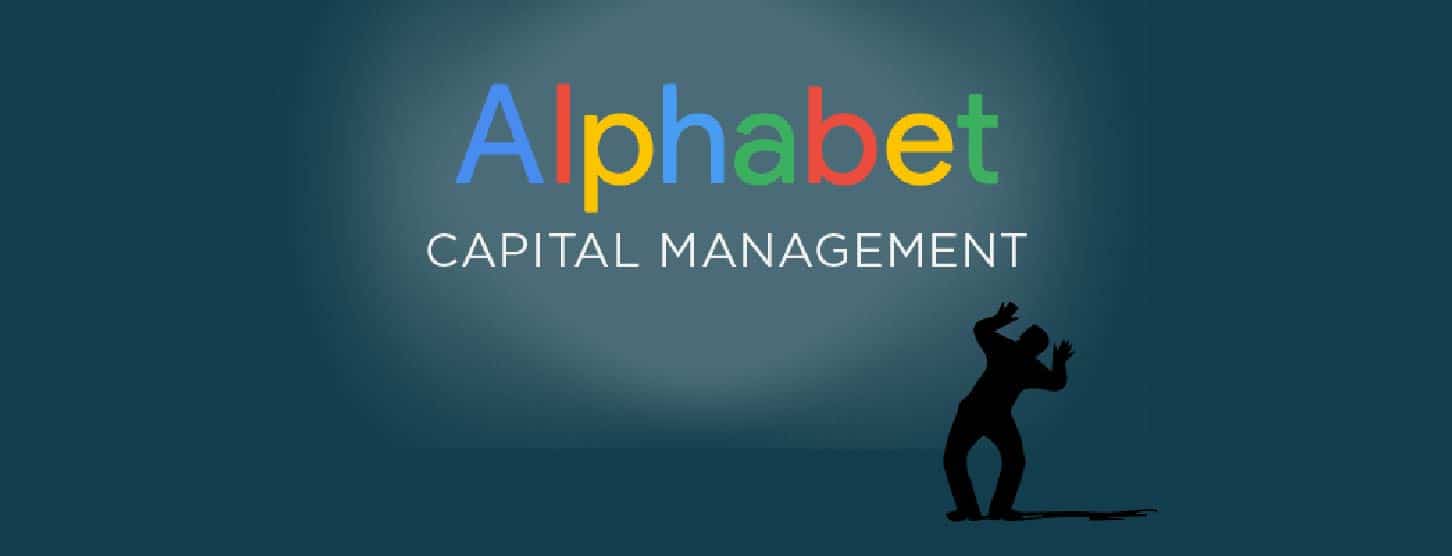By Eric Rovick
Share post

Eric Rovick is an equity markets professional based in the UK. He has spent over 20 years in the financial markets, initially as an analyst and then as a manager of traders, analysts and salespeople at firms including Fidelity International, ABN Amro, and Collins Stewart Hawkpoint. Eric is a seasoned observer of investment decision-making across the both the buy-side and sell-side and within organizations ranging from large banks to small investment boutiques.
Just browsing?
Recent news that Google is exploring a partnership with BlackRock [i] confirmed for many the suspicion that it’s only a matter of time before the technology giant makes a more aggressive move into asset management.
Google had previously denied any such intention; responding to reports last summer that it had commissioned research into how it could enter the sector, Google was definitive, telling FTfm, that it had “no plans to get into asset management or the funds business”[ii].
This hasn’t convinced many of the asset management executives I talk to.
Indeed, a broader survey by State Street [iii], found that some 79% of the senior asset management respondents said they expected their businesses to be disrupted by a non-industry player.
Google already has a VC arm, a cash management team and a no-doubt impressive trading floor at its California campus. It would be naïve to assume that its management team wasn’t thinking hard about its options – especially given similar exercises by Facebook, Apple, and the success in financial services already enjoyed by its Chinese cousin, Alibaba.
Alphabet Capital Management
Google’s technological footprint means it’s not hard to start imagining how it might get into investments.
The expected partnership with BlackRock confirms it already has the infrastructure (through its 2014 acquisition of DeepMind) to employ big data and machine learning in the production of investment strategies.
Google also has primary access to some of the world’s largest data sets. Its dominant presence in internet search gives it huge data-driven insights into our preferences, lifestyles and buying habits – perfect ingredients for short-term quantitative investment strategies. The value of Google Maps was demonstrated by Neil Currie from UBS who famously forecast Walmart revenues by analysing satellite images of traffic in their store parking lots [iv].
Product distribution is another avenue.
Google could conceivably build an intelligent, low-fee platform to market investment products and enter the wealth management/robo-advisor space. It’s also one of a number of brands that could viably use their clout to drive changes in the way that younger people choose and buy investment products.
People Power
But in assessing Google as a competitor, we shouldn’t focus solely on its technology. For, however Google does end up entering asset management, it is the company’s culture – an altogether more human element – that will help determine how successful it is.
Through deliberate steps, Google has built a culture that is characterised by a focus on process engineering and incorporating the lessons of behavioral science. Applied to each of its activities, this gives Google a competitive advantage that is more sustainable than fast-moving, shape-shifting technology alone.
Does this make the outlook for today’s asset managers even more bleak?
No. I’d argue it demonstrates an opportunity because it shows just how valuable this kind of behaviourally-aware, process-driven approach can be. And, if today’s investment managers can learn to mimic the relevant aspects of Google’s mind set, they’ll give themselves a better chance of improving fund performance and remaining competitive as Google and others enter the market.
Flipping the bonnet
In his recent book, Work Rules!: Insights from Inside Google That Will Transform How You Live and Lead, Google’s Head of People Operations, Laszlo Bock describes Google as a “learning institution”, one that excels in applying a core engineering expertise to its own processes and is dedicated to the Kaizen philosophy of continuous improvement first mastered by the Japanese.
Here are a few examples of how Google focuses on people and process to learn, counteract bias, and improve:
– Google has its own research team dedicated to exploring how people explore work. Google’s PiLab (People and Innovation Lab) is made up of scientists and PhDs in psychology, sociology, organizational behaviour, and economics. This team has a mandate to devise solutions to the often-tricky organizational questions and challenges. Data is an important part of this approach; explains Bock: “We use data – evidence – to guard against rumor, bias and plain-old wrong headedness.”
– As behavioural science has become mainstream, Google has invested in initiatives that seek to optimize the cognitive performance of its staff. In a recent blog post [v], Bock and Brian Welle (a member of Google’s People Analytics team) explain their approach: “The first step is education; we need to help people identify and understand their biases so that they can start to combat them”. Over 26,000 employees have taken part of in the workshop Unconscious Bias@Work.
Supporting this, Google has outlined a 4-step process that can be used by individuals and teams to reduce the influence of cognitive bias in their day-to-day activities:
1. Gather facts.
2. Create a structure for making decisions.
3. Be mindful of subtle cues.
4. Foster awareness. Hold yourself – and your colleagues – accountable.
And in a chapter entitled Don’t Trust Your Gut, Bock gives practical examples of how Google weeds out the biases to which we are all prone and fallible. For example, when interviewing job candidates, Googlers are trained to be aware of and minimize the impact of Confirmation Bias (the tendency of the interviewer to spend most of the interview confirming her impressions of the first 10 seconds).
– As a data-driven organisation, Google knows it must be free of intellectual shortcuts in the interpretation and use of data. The technology group is careful to be wary of the assumptions it uses. For example, it realizes that the outcomes of many types of events follow a power law distribution rather than a normal distribution. In fact, the processes by which it manages its own people assume a power law distribution of its employees’ performance. In contrast to the average fund management firm today, imagine how differently Google would construct its risk and return assumptions.
– Being wary of the influence of individual bias, Google adds additional steps to some internal processes, such as assigning performance ratings to staff. To minimize bias in the rating process, calibration meetings are held between managers to calibrate draft performance ratings for individuals across different teams. Most of these meetings begin with a gentle reminder of the pervasiveness of bias: a handout is distributed that describes several cognitive biases, including the recency effect, fundamental attribution error, availability bias, central tendency, and the horns & halo effect.
– Google also takes a scientific approach to studying their best people. Bock: “Studying your strongest people closely and then building programs to measure and reinforce their best attributes for the entire company changes the character of your company. If you also are able to get those who struggle the most to be substantially better, you’ll have created a cycle of constant improvement.” Translating this intention into action, Google’s internal learning facility, Googler2Googler, organises staff lectures delivered by internal experts. In 2013 alone, over 2,200 different classes were delivered to over 21,000 Google employees by an internal ‘faculty’ of over 3,000 experts.
– Many of Google’s ideas about process and behaviour improvement aren’t revolutionary and borrow from other sources. Bock cites examples from Atul Gawande’s book The CheckList Manifesto and describes how his team created checklists with the aim of improving managers’ behaviours; “It turns out that checklists really do work, even when the list is almost patronizingly simple. We’re human, and we sometimes forget the most basic things.”
Takeaways for investment management
Like investment management firms, Google is fundamentally a human-capital organisation that makes money from the ideas and insights of its top technical people. Outside of the expected investment in technology, we’ve seen some of the ways that Google also focuses on optimising process and the decision-making performance of its teams and employees.
Today’s asset managers could benefit from this approach if they want to remain competitive in the face of current and future challenges.
It’s encouraging that some have already started to do this.
The evolution of cognitive science around investment decision-making and a growing use of big data analytics means investment organisations now have access to the information that can enable them to evolve their own processes. Software, like that from Essentia Analytics, supports this by providing data-driven assessments of the fund manager skill and process that were simply not possible just a few years ago.
The risk is that other investment managers simply do nothing and fall behind the curve. In which case, it won’t be technology, per se, which marks the demise of asset management as we know it, but rather the unwillingness of organisations to evolve their cultures and processes in line with what we now know about investment decision-making and how people work.
Next steps
Investment firms can mimic Google by:
– Making investment staff more aware of how behavioral biases affect their decision-making
– Analyzing investment decision-making data to identify the sources of skill in investment decisions
– Nudging investment staff to make the right choices for their investment processes and decisions to combat poor investment process design, mandate drift, and short-termism.
Self-aware investment managers are already starting to do what Google does:
– Using enhanced data analytics software to create a feedback loop around the investment decision-making process
– Using coaching to minimise biases and generally improve behaviours of the investment staff
– Analyzing the nature of skill in their best people. Bock’s recommendation is to “Put your best people under a microscope. Through a combination of circumstance, skill and grit they have figured out how to excel. Identify not just your best all-around athletes, but the best specialists… The more specific you can be in slicing expertise, the easier it will be to study your stars and discern why they are more successful than others.”
– Creating an internal function to promote investment excellence.
References
[i] BlackRock and Google in talks over joint venture (Aime Williams), 18th October 2015, Financial Times – http://www.ft.com/cms/s/0/f5f7dda8-734f-11e5-bdb1-e6e4767162cc.html#axzz3rqXLeKQj
[ii] Google study heightens fund industry fears (Madision Marriage), 28th September 2014, FT FM – http://www.ft.com/cms/s/0/7ce1d560-457c-11e4-9b71-00144feabdc0.html#axzz3rqXLeKQj
[iii] Opportunities for Optimism?, July 2015, State Street 2015 Asset Manager Survey –http://www.statestreet.com/content/optimism.html
[iv] How Google Is Poised To Become A Dominant Investment Manager (Jon Hartley), 6th October 2014, Forbes Magazine –http://www.forbes.com/sites/jonhartley/2014/10/06/how-google-is-poised-to-become-a-dominant-investment-manager/
[v] You don’t know what you don’t know: How our unconscious minds undermine the workplace (Bock & Welle), 25th September 2014, Google Official Blog –https://googleblog.blogspot.co.uk/2014/09/you-dont-know-what-you-dont-know-how.html


